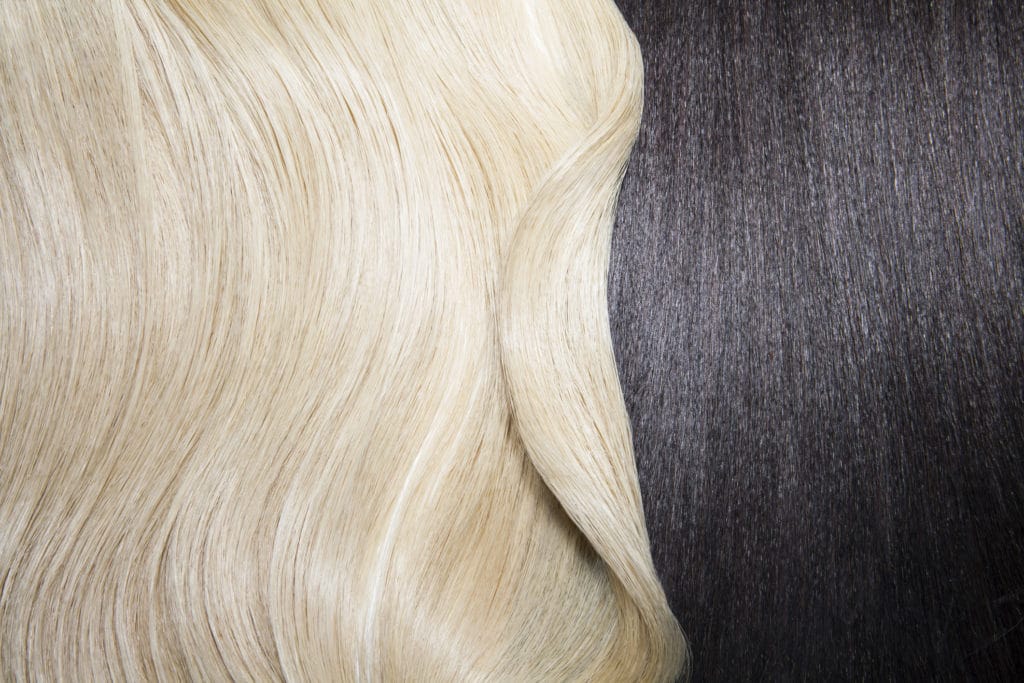
Head lice are tricky, especially if you cannot distinguish lice from the hair. This is because head lice are paler in blonde hair than in other hair colors. This makes treatment time-consuming and problematic.
Unlike their dark-haired counterparts, blonde hair is more challenging to treat. But you do not have to worry because we have created a guide that will show you what you need to know and do so it’s much easier for you to understand head lice in blonde hair!
Early Signs Of Head Lice Infestation
Hair color does not make a difference with head lice. Whether you have blonde or dark hair, you are as susceptible to lice as anyone else. So it’s better to prevent the infestation before it spreads.
Early detection is key to preventing a severe infestation. Therefore, it is vital to know some early signs of head lice. Head lice are usually transmitted through contact with the hair and objects of infected people. They thrive especially well in schools where children interact daily. Early signs include:
- Itchy scalp is caused by lice bites or an allergic reaction to the insects’ saliva.
- Tickling sensation on the scalp or back of the neck, as if something moves in the hair.
- Black spots that look like dirt on the scalp, neck, and shoulders (these are lice eggs or nits).
- White spots. These are empty eggs of head lice.
- Irritability and insomnia due to discomfort.
- Sores on the head caused by scratching.
If the infestation becomes more severe, the affected person may develop a rash on other body parts like in the neck. This is caused by an allergic reaction to a substance in the lice saliva. In many people, this rash disappears within a few days after treatment.
Also, note that these symptoms do not always mean that a person has head lice. Other conditions can cause similar symptoms, such as an itchy scalp. It may be dandruff or an allergic reaction to hair care products, conditioners or shampoos. See a doctor if you are unsure.
Habits That Increase Chances Of Getting Head Lice
Lice are most commonly found on young children and their scalps, but they can affect anyone. If you see red spots in hair, you may be worried that your child has lice. Here are habits to avoid the risk of getting lice.
Sharing personal items (hats/scarves/helmets, etc.)
Head lice are transmitted through direct contact with an infected person. If you put on a hat or scarf worn by a person who has head lice, dislodged lice have the opportunity to crawl onto your scalp. This can start the life cycle all over again. The same is true for sports helmets, which means athletes should be careful when borrowing equipment from others.
Head-to-head contact.
Whether falling asleep on the couch or sitting in a crowded classroom, it’s easy for lice to find a new home when you put your heads together. Next time you are watching TV with friends or family members, try pulling up chairs instead of sitting side by side on the couch or floor. Do not let students put their heads together during nap time at daycare or school.
Treatment
If you already have head lice, it is better to treat them as soon as possible to avoid complications from excessive scratching that can lead to sores. Even though there is no specific technique for treating blonde hair with head lice, it is more challenging to find head lice and nits in blonde hair because of the light color.
The most common and best method of detecting head lice is to use a fine-toothed nit comb on wet hair that has been treated with a conditioner. Nits can be mistaken for dandruff, hairspray droplets, or dirt particles. Nits are firmly attached to the hair shaft and have an oval shape. Nits are tiny (about the size of a thread knot), challenging to see, and often mistaken for dandruff flakes. If they are easily removed, they are most likely dandruff.
Some over-the-counter medications (OTC) claim to kill lice and eggs in a single treatment, but others need to be repeated in 7 to 10 days. However, it is possible to treat head lice without spending too much and experiencing the dangers of traditional shampoos that contain pesticides. By using LiceFreee, it is a safe, effective, and non-toxic over-the-counter (OTC) medication to treat head lice for you and for your family.
Reminder
As parents, you don’t want your child to suffer from an itchy scalp from their schoolmates’ head lice. Losing time at school because of lice bites is not good for your child. Avoid them with Licefreee, America’s best-selling non-toxic head lice treatment brand since 1999.
Get peace of mind and enjoy your time with your family without the worry and embarrassment of head lice.
